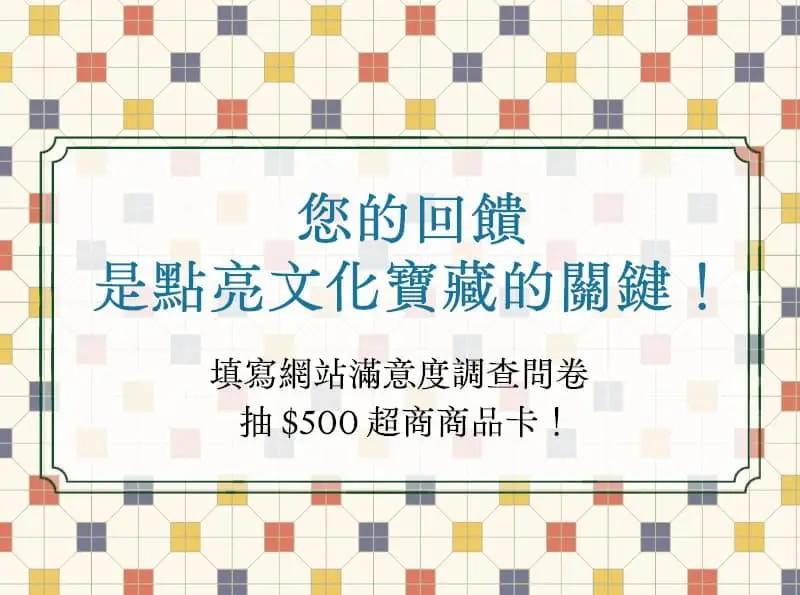我的冥想綜合了想像與現實經驗,首先我需要回顧我過往擁有的對於料理的記憶,而這些記憶好的部分其實多半來自於在外用餐的經驗,因為我的家人不懂料理,煮的東西好不好吃完全仰賴運氣,因此我無法從中提取我渴望再現的湯品,而來自餐廳的,尤其是日式料理的體驗讓我最為難忘,因此我結合了對於日式料理的記憶與想像,以及我離家工作後自己下廚的經歷,構築出一道鯛魚清湯。 我想像自己走在社區旁的柏油路,左拐、右拐,上坡,來到了超市的大門前,我玩心大發的揮起手跟自動感應門打個招呼,儘管沒有這個必要,然後我感受到隨著門開啟吹起我髮絲的氣流,冷氣的乾燥冰涼,以及來自超市保鮮櫃,蔬果陳列架共同混合的一種消減了的野性氣息與融冰的腥氣,兩種氣味隨著我的移動總量守恆的不定增減,陪伴著我推動超市推車穿梭。我首先站在冰櫃前,目標明確的拿起已經被加工清理乾淨的鯛魚塊,感受到上面的霜在指尖化成水,接著再拿起一旁的長蔥,感受著它因為過長而從我手上下墜的拖力。姜與蒜家裡總是常備,不太需要再買,我又慢慢晃到調料架前抓起一瓶綠色蓋子的胡椒,並在經過轉角時從乾貨區抓起昆布與柴魚碎,推車上開始沙沙作響。 又是熟悉的街道,只是風向相反,我踏上回家的路,打開親切的木門,我的雙手快要敵不過地心引力的把東西拖跩進了家門,再慢慢低空盪進廚房,其實沒什麼東西要進冰箱,因為馬上都要在鍋子裡作伴,先在爐子上架好鍋與三分之一的水,噠噠噠的聲音點燃了當代的火焰,水在鍋裡升溫,魚肉在我手裡升溫,被分割成小小的方塊,蔥、算、昆布和柴魚在水裡翻滾,並在沸騰的氣泡出現前全部撤離,最後像投魚飼料一般,一塊塊的將魚肉丟進湯鍋,再蓋上鍋蓋,等待3~5分鐘後開鍋撒下青蔥碎,完成~
My meditation combines imagination and real-life experiences. First, I need to revisit my past culinary memories. Most of the positive memories come from dining out, as my family isn't skilled in cooking, and the quality of home-cooked meals often depended on luck. Therefore, I couldn't recreate any soup from home. Instead, my unforgettable experiences with Japanese cuisine at restaurants inspired me. Combining these memories with my own cooking experiences after moving away from home, I envisioned making a clear snapper soup. I imagine myself walking along the asphalt road next to my community, making left and right turns, climbing a hill, and arriving at the entrance of the supermarket. Playfully, I wave at the automatic sliding doors, feeling the breeze that brushes my hair as the doors open. The combined scents of the produce displayed from the supermarket's refrigerated section—a subdued wild aroma and the fishy smell of thawing—shift with my movements, maintaining a constant presence as I push the shopping cart through the supermarket. First, I stop at the freezer section and purposefully pick up pre-cleaned snapper fillets, feeling the frost melt into the water on my fingertips. I then grab a bunch of green onions, feeling the weight drag down because of their length. Ginger and garlic are always in stock at home, so there's no need to buy them. I slowly make my way to the seasoning aisle, picking up a bottle of pepper with a green cap, and then grab some kombu and bonito flakes from the dry goods section, adding a gentle rustling sound to my cart. I walk back home along the familiar streets, now with the wind in the opposite direction. I open the welcoming wooden door and struggle to carry everything inside, finally making my way into the kitchen. There's no need to refrigerate anything since it'll all be used soon. I place a pot with one-third water on the stove and light the flame with a click. As the water heats up, I cut the fish into small cubes. Green onions, garlic, kombu, and bonito flakes are added to the water and removed just before it boils. Finally, like feeding fish, I drop the fish pieces into the pot, cover it, and wait for 3-5 minutes. I finish by sprinkling chopped green onions on top. Done!
-
《島嶼未來料理教室》Future Formosa Culinary Lab Profile Nr.049 22-30歲的桃園市彷彿一隻有著Sweet tooth的蛇,平均花費100~250元在餐費上。因為味道上有一個調和的很好的主角衝出來(拉麵的豚骨湯、炸甜點裡面融化的鮮草莓與卡士達醬)而對飲食記憶留下深刻印象。如果世界末日終將來到,會選擇與外婆共享這一餐。關於家庭的一道料理,她提到外婆的台式炸豬排。
"Like a Sweet-Toothed Snake" Female(22-30 yrs)/ Taoyuan City / 100-250 NTD per meal
Profound dining impressions were shaped by standout, well-balanced main flavors, such as the pork bone broth in ramen or the fresh strawberries and custard in fried desserts. If the end of the world were to come, she would choose to share the meal with her grandmother. As for a family dish, she mentioned her grandmother's Taiwanese-style fried pork chops.
-
國立臺灣歷史博物館的第 1 個「公共飲食記憶 NFT 化」實驗計畫《超時空島嶼餐桌》
National Museum of Taiwan History's First NFT Experimental Project on Public Dining Memories《Time-Space Dining Tables》
「國立臺灣歷史博物館」為推動國家文化記憶庫之永續發展,融入當代議題、常民生活及在地關懷,連結博物館專業、數位創新思維與多元社群行動,以促進臺灣原生文化之活化運用,鼓勵全民共同開展記憶庫多元主題與主題素材近用。
本計畫案於112年推出《島嶼庫客 Islands Cooker》飲食記憶系列7支影片,探究臺灣飲食的歷史成因,113年延續「餐桌」的概念,加入「未來」元素,委由畸零地創造股份有限公司辦理《島嶼未來料理教室——NFT設計工作坊》,以記憶庫長期深耕之飲食記憶主題,透過非同質化代幣(Non-Fungible Token,以下簡稱 NFT)設計工作坊,增進記憶庫之內容與應用,落實臺灣原生文化之推廣。
《島嶼未來料理教室——NFT設計工作坊》以「推測設計」為核心,反思記憶料理的獨特性,其之於 NFT的當代意義及其飲食文化價值,並將工作坊延伸設計為「發掘身體飲食記憶,運用想像和推測來創造未來島嶼飲食文化」的參與式體驗活動。工作坊由編舞家與引導師,透過一連串的帶領、想像和對話,挖掘及連結蘊藏身體感知中的飲食記憶,並讓參與者書寫飲食記憶;接著由畸零地工作室與生成式AI 「ChatGPT 4o」協作製作出 「記憶食譜 NFT」及文字翻譯;最後線上場以「圍爐」的概念,讓參與者在雲端上互相分享與交流。
這些飲食記憶透過NFT不可替代、數位交換的特性,被永久保存並流傳,期望每個人都能回首屬於自己的飲食記憶和歷史,經由公共化的途徑與媒介,成為社會記憶的一部份,構築社群認同的可能。
To promote the sustainable development of the Taiwan Cultural Memory Bank, the National Museum of Taiwan History integrates contemporary issues, ordinary life, and local concerns. By combining museum expertise, digital innovation, and diverse community actions, it aims to revitalize and utilize Taiwan's indigenous culture. The museum encourages the public to collaboratively develop and access various themes and materials within the memory bank.
This project launched the "Islands Cooker" series of seven videos on culinary memories in 2023, exploring the historical origins of Taiwanese cuisine. Continuing with the concept of the "dining table" and incorporating "future" elements in 2024, the project entrusted Ground Zero Co., Ltd. to handle the "Islands Future Cuisine Classroom—NFT Design Workshop." By delving into the long-term themes of culinary memories from the Taiwan Cultural Memory Bank and utilizing the Non-Fungible Token (NFT) design workshop, the project aims to enhance the content and application of the memory bank, promoting the dissemination of Taiwan's indigenous culture.
The "Islands Future Cuisine Classroom—NFT Design Workshop" centers on "speculative design," reflecting on the uniqueness of memory cuisine and its contemporary significance and culinary cultural value in relation to NFTs. The workshop is extended into a participatory experiential activity, designed as "discovering culinary memories in body and using imagination and speculation to create future island culinary culture." The workshop, led by choreographers and facilitators, guides participants through a series of activities, including imagination and dialogue, to uncover and connect with culinary memories embedded in their bodily perceptions. Participants then write down their culinary memories. Next, Ground Zero Co., Ltd. collaborates with the generative AI "ChatGPT 4o" to create "Memory Recipe NFTs" and translate the texts. Finally, the online session, based on the concept of "reunion dinner," allows participants to share and exchange their experiences and creations in the cloud.
These culinary memories, preserved and circulated through the non-fungible and digital exchange characteristics of NFTs, are expected to be permanently stored and shared. The goal is for everyone to reflect on their own culinary memories and histories, making them part of societal memory through public pathways and media, thereby fostering a sense of community identity.
※本圖像為AI生成內容
※This image is AI-generated content.












